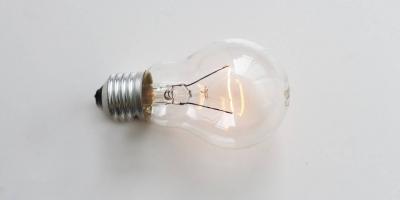The fast-paced modern living in Sydney makes energy a valuable commodity ‒ both electricity and gas. Without power running the equipment and your entire household, it’s merely impossible to do things efficiently like you usually do.
Using energy consumes a large portion of your monthly household budget aside from food and other needs. With this worry in mind, you are surely finding ways on how to reduce your energy bills. For that, the best way of knowing these fluctuating bills in your household is to start assessing your energy bills.
In the 2017 report of the Australian Bureau of Statistics (ABS), the average weekly household cost of electricity in Sydney reaches $38.69 while $10.20 for gas and other fuels.
Moreover, billings vary depending on your energy distributors as well as retailers. Ausgrid is the distributor for inner, northern and eastern metropolitan Sydney. For southern and western metropolitan Sydney, Endeavour Energy is the network provider service.
Understanding your energy bills can be confusing due to some terms and jargons the energy distributors are using. That said, let’s understand the data in your energy bills, so next time it’s easier to know how you come up with those amounts before paying.
Account Information
The first part of your bill is the summary of your account and all other relevant information. Also, the first thing that you’ll look into either electricity or gas bills is the opening balance and how much you have paid. The discount is only in effect when you pay on time rather than after the due date of your payment schedule.
Energy Charges
The charges for both electricity and gas have the same composition‒ usage and supply charges. These two differ significantly and affects the price of your bills:
- Usage Charges – It is the amount of energy you consume for a month or quarterly. Electricity usage is measured in kilowatt-hour (kWh) while gas is measured in megajoules per hour (MJ).
- Supply Charges – It is a fixed delivery cost that does not change regardless of how much energy you consume. It’s a daily service charge for the energy provider in supplying power or gas in your home.
The usage values derive from reading the meter in your property. If you are receiving a government energy concession, you have credits and rebates showing how much goes back to you and reduces your bills.
Furthermore, the good and services tax (GST) adds to your energy charges that retailers remit as revenue of the government. To sum up, these are the major components of the energy charges you are receiving every month.
Tariffs or Plan Name
When the plan name is present, it’s probably on the front page. If you can’t find this on your bill, it’s better to contact your retailers. The tariffs are the different charges for supplying energy in your household.
You can see these in the tables or graphs that present on how retailers calculate your bill. Different tariffs charge you on a daily basis.
Single-rate tariffs
Such type of tariff is also called flat tariff that allows you to pay the same rate whatever time of the day you use energy. It’s the standard rate that you can pay that’s usually cheaper than a peak period.
The only available tariff for gas usage is the single-rate tariff. As indicated in your gas bill, the first part of your usage is in one rate or cost. Meanwhile, there’s a different cost for the next part of your usage.
Time-of-use tariffs
The time-of-use tariffs mean the electricity costs variedly at different times of the day. These include the following:
- Peak – The time when electricity cost the most. Ausgrid peak periods are between 2 pm- 8 pm weekdays from 1 November to 31 March and between 5 pm-9 pm weekdays from 1 June to 31 August. While Endeavor Energy peak usage periods are on weekdays from 1 pm to 8 pm.
- Off-peak- The time when electricity cost the cheapest. For both Ausgrid and Endeavor Energy, the off-peak is between 10 pm-7 am weekdays and weekends.
- Shoulder- It’s when electricity costs a bit less than the peak. The shoulder is usually applied between the peak and off-peak periods for both energy distributors.
You can measure your electricity usage at different times of the day if you use a smart meter or time-of-use meter. These metering devices serve as a requirement for this type of tariff.
Controlled load tariffs
The controlled-load tariffs apply when using your electric hot water system or underfloor heating. The appliance has its meter, and the retailer charges for the energy it only uses. Also, such controlled load rates are usually lower than other prices.
Demand tariffs
It is also known as demand charges than the common usage and supply charges. The tariff is possible when the demand to use much equipment at a specific time is high.
Renewable Energy Feed-In
Your bill shows if you support renewable energy such as solar, wind or biomass. But when part of your energy comes from it, apparently, you’ll need to pay extra for it.
There are instances when you have solar panels connected or receiving government-based solar feed-in tariffs. If this is the case, then your bill details any amount from this plan as credits and pays back to your bills.
Usage Comparison and History
The electricity usage comparison and history show a graph or table comparing your energy bill to other households. It shows how much kWh per day a family should consume with a member of one, two and more in your area. Also, some retailers provide information on how your energy usage changes over time.
Contact Details
The first contact detail in your bill is from your retailers or the company that bills you for electricity usage. Meanwhile, the retailers add the energy distributor’s phone number as ‘fault and emergencies’.
It’s because distributors own the poles and wires where you are connected. Also, you can contact them in case of electrical faults and emergencies in those properties. h
Payment Options
The payment information is usually on the footer of the bill and self-explanatory. Your retailers adapt a different mode of payments such as direct debit, mailing your payment, and paying using a credit card or BPAY through phone or internet.
But some payment options incur an additional fee. Read and follow the steps carefully so you shouldn’t have difficulty in paying your bills.
Conclusion
The best way to reduce your energy bills is to know what makes it high and when did it happen–and these are written in your bills. Despite the technical words and numbers, it’s essential to understand your energy bills. It’s best to check out your account information, how energy charges accumulate from tariffs and other services and up to the payment of your bills.
Moreover, understanding your energy bills is the first step in assessing how to minimise your household expenditure. Also, it helps you in becoming responsible with energy usage that will help the community and environment.
Gordon Powers is your partner when it comes to smart metering and all other electrical works. Our level 2 electricians are expert when it comes to your energy bills and can provide tips on how to reduce your monthly expenses. We ensure that you’re 100 per cent satisfied with our quality and excellent services.
Call us at (02) 9199 7480, and we’ll show up to your doorsteps on time.










